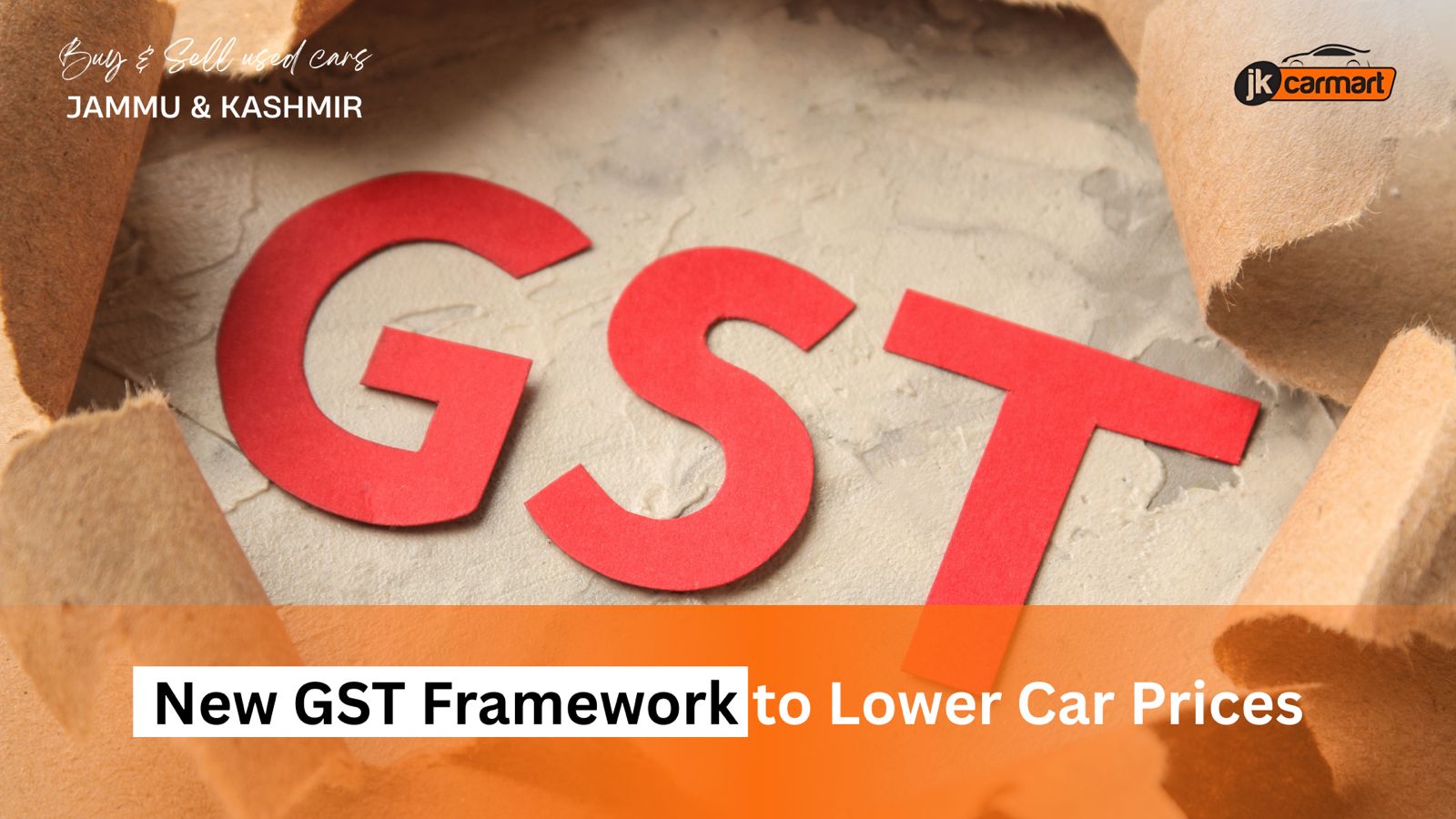Introduction
I’ll be honest, when I first heard about the new GST framework, I thought it sounded too good to be true: cheaper cars? Really? But turns out it’s real enough. The government has reduced the GST slabs for vehicles into something simpler, and cars, especially small ones, are more affordable than before.
What used to be a maze of tax slabs and extra cess has now been folded into three clear brackets of 5%, 18%, and 40%. For buyers, this is a major policy change that will decide whether your next car feels affordable or out of reach.
For years, buyers complained about paying more than they understood., With this new framework, the government has finally tried to bring some order. In this article, we’ll look at what this shift means for cars and why it could be a turning point for the Indian auto market.
The GST Framework That Needed Fixing
Before this change, cars fell into a confusing web of GST slabs. These were 5%, 12%, 18%, 28%, plus an extra compensation cess depending on the engine size, type, or category.
This resulted in automakers complaining about the system and dealers getting stuck with credit backlogs. Also, buyers like you and me just paid more without really knowing why.
But now it’s much simpler:
- 5% GST for EVs
- 18% GST for most vehicles and auto parts
- 40% GST for luxury and high-end categories
Also Read: Why Used Car Values Are Rising in 2025 – And What It Means For You
Small Cars: The Biggest Winners
This is where most people will actually feel the change. Earlier, there was a 28% GST plus an extra compensation cess on small cars, which made even entry-level hatchbacks surprisingly expensive for first-time buyers. Now, under the new GST framework, they’re placed in the 18% slab with no extra cess.
To put this into perspective, in cars like Maruti Swift, Wagon R, Tata Tiago, or Hyundai i20, you could save anywhere between ₹60,000 and ₹1.06 lakh, depending on the model and variant. And that is a huge price drop that can actually bring a higher trim or safer variant within reach for middle-class families.
Small cars make up a huge share of India’s passenger vehicle market. For many buyers in tier-2 and tier-3 cities, the difference between 28% plus cess and 18% flat GST could decide whether they buy a car this year or wait another couple of years. This cut in GST slabs holds the power to revive demand in a segment that had been slowing down in recent years.
SUVs and Big Cars: More Complicated Than They Look
SUVs and larger cars now come under a flat 40% GST. At first glance, that looks like a big jump compared to the old 28%. But the catch here is that the earlier system also added a hefty compensation cess on top of the 28%, which often pushed the final price much higher.
With that cess now scrapped, the overall cost for some SUVs has actually gone down. For instance, Toyota Fortuner buyers could save up to ₹3.49 lakh. Skoda models are cheaper by as much as ₹5.8 lakh, and Kia SUVs are offering cuts of around ₹4.48 lakh.
So, this shift makes a lot of premium SUVs more affordable than they were before, even though the tax number sounds bigger on paper.
EVs: Still the Smartest Buy
Electric vehicles keep their biggest advantage at just 5% GST. The government hasn’t touched that slab, and that’s a huge deal. EVs stay locked at the lowest rate, while petrol and diesel cars are taxed at 18% or even 40%
So that means if you’re buying something like a Tata Nexon EV or stretching for a premium EV from Mercedes or BMW, the tax is the same, just 5%. If you add to that the lower running costs of charging compared to fuel, you will find that the savings are substantial.
The consistency also matters. Buyers know this rate has been stable since the early EV push, which gives confidence that the government is serious about making electric mobility mainstream.
Two-Wheelers and Daily Rides
Scooters and motorcycles with engines under 350cc, which are the ones most commuters ride every day, used to attract 28% GST. Now they fall under 18%.
This means that if you’re looking at a Honda Activa, a Hero Splendour, or even a Bajaj Pulsar, the price will drop because of this cut. And since millions of people use these bikes and scooters for daily travel, this will bring relief to so many Indians.
The savings can run into several thousand rupees, depending on the model. This means a huge relief for two-wheeler riders.
GST Impact on Cars: Old vs New
| Category | Old GST + Cess | New GST Rate | Price Impact |
| Small cars (Swift, Tiago, i20) | 28% + cess | 18% | ₹60k–₹1.06 lakh cheaper |
| SUVs (Fortuner, Harrier, etc.) | 28% + cess | 40% | Mixed—some cuts, some flat |
| Two-wheelers (<350cc) | 28% | 18% | Cheaper for daily riders |
| EVs | 5% | 5% | No change, still lowest |
| Parts & accessories | 28% | 18% | Lower maintenance costs |
Why It Feels Different This Time
Back when GST first came in 2017, it was honestly a mess. I remember back in 2017, buying a car felt like trying to decode a puzzle. Was it 28% plus cess? Or 18% plus something else? Even dealers sometimes struggled to explain why two hatchbacks, barely different in size, were taxed so differently. Buying even a basic hatchback felt more confusing than it should’ve been.
Now it’s cleaner. Just three rates: 5% for EVs and essentials, 18% for most cars, and 40% for luxury or big SUVs. That’s it. No hidden cess, no extra add-ons to figure out.
And the best part is that companies like Toyota, Skoda, and Tata have already cut prices within days of the new slabs being announced. For buyers, that makes the change feel real immediately, not just something buried in government paperwork.
What It Means for You
- If you’re shopping on a budget, Small cars and everyday scooters are finally within easier reach. The lower 18% GST has trimmed prices enough to make upgrades or first-time buys far more doable.
- If you’re eyeing an SUV or a bigger car: The 40% GST looks big on paper, but don’t panic. Many companies are already cutting prices to keep buyers interested. In some cases, you could even end up paying less than before.
- If you’re leaning toward an EV: Nothing changes, and that’s actually good news. The 5% GST rate stays the same as before. This makes EVs the most tax-friendly option on the road.
Also Read: Top 10 Things To Check Before You Buy A Second-Hand Car
Conclusion
The new GST framework has cleared out the confusion and made car prices easier to understand. Small cars and two-wheelers are now cheaper. SUVs are holding steady with some price cuts, and EVs stay at the lowest tax rate.
These changes will show up in how people decide to buy. Families will find cars that fit their budget better. Dealers get a cleaner system to work with. And the auto industry gets a chance to bring more buyers back into the market. For India, it’s a move toward simpler taxes and fairer prices.





